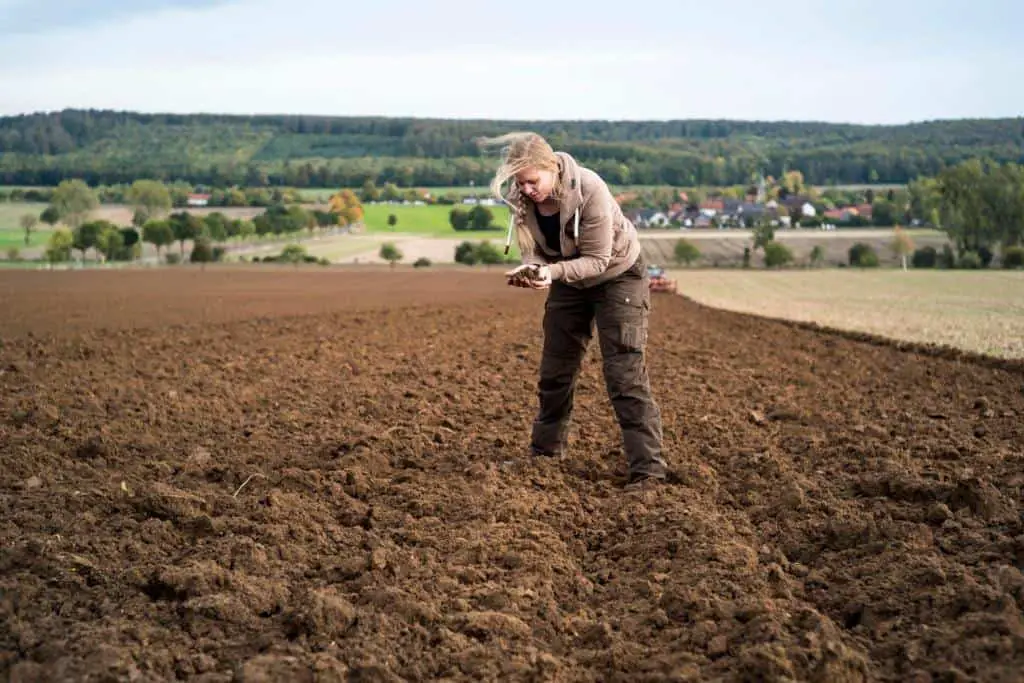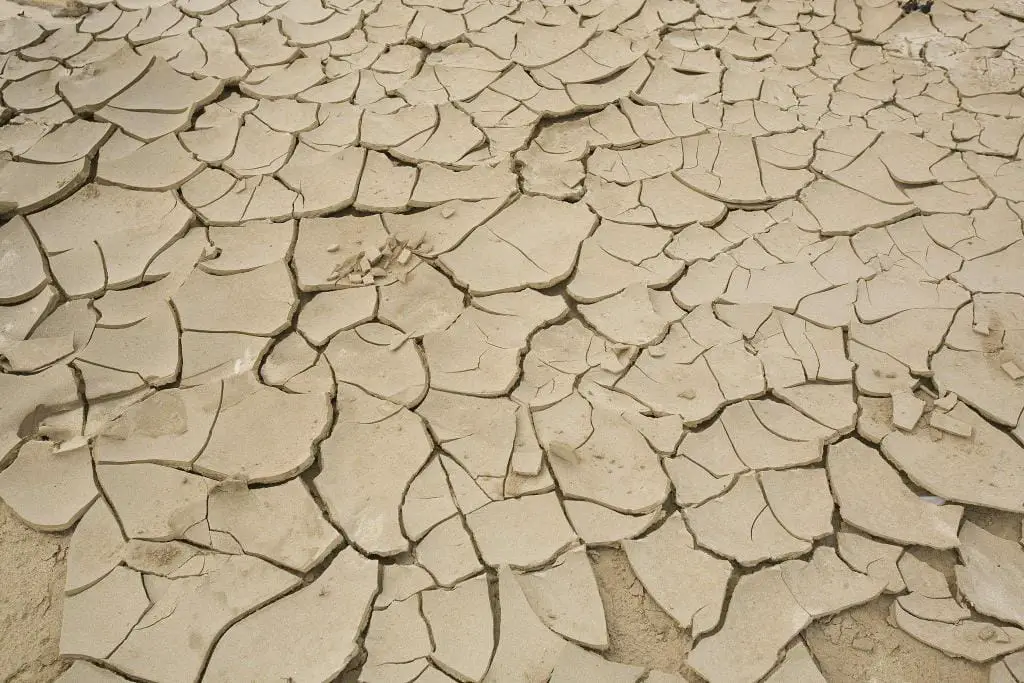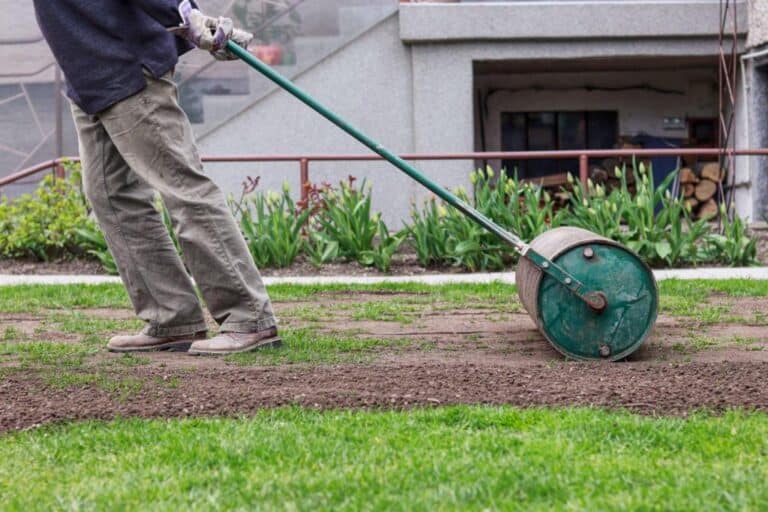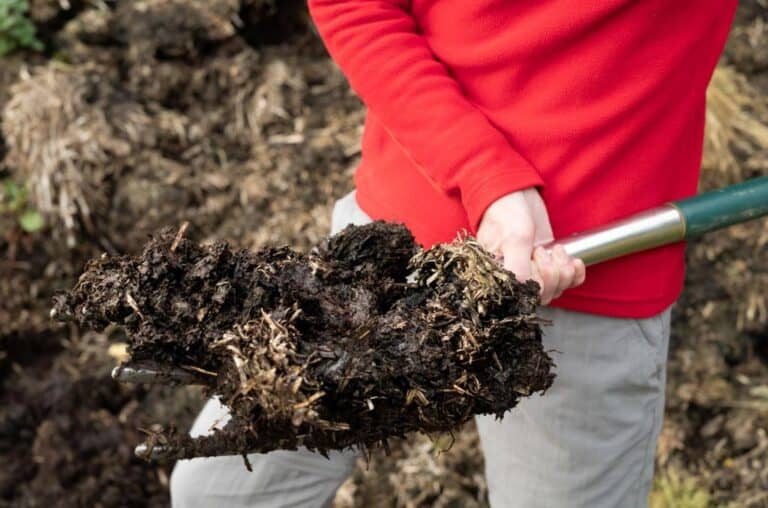Why Is Topsoil Considered a Nonrenewable Resource?

Imagine yourself in a lush, colorful field with thriving plants and swaying crops all around you. Beneath your feet lies a hidden treasure that sustains all this life: topsoil. It’s not just dirt; it’s the lifeblood of agriculture and the foundation of our ecosystems. But here’s the catch: It’s a nonrenewable resource, and its loss could jeopardize our very existence.
In a world where we often think of resources as infinite, topsoil stands as a stark reminder of nature’s delicate balance. Its creation is a painstakingly slow process, taking centuries to form just a few inches of this fertile layer. Yet, in our quest for food and urban development, we’re eroding this precious resource faster than it can regenerate.
Join us on a journey to uncover the secrets of topsoil as we explore why it’s deemed nonrenewable and the far-reaching consequences of its depletion. Discover the critical role topsoil plays in our lives and what we can do to ensure it endures for generations to come.
Understanding Topsoil
Before we dive into why topsoil is nonrenewable, let’s first understand what topsoil is and its composition. Topsoil is the uppermost layer of soil, typically ranging from 2 to 12 inches in depth, depending on the region. It contains a mixture of organic matter, minerals, water, and living organisms like earthworms and microorganisms. This combination of elements creates a fertile environment for plant roots to thrive.
Topsoil formation is a slow and intricate process that can take centuries. It begins with the weathering of rocks and the decomposition of organic matter. These processes gradually break down rocks into mineral particles while enriching the soil with essential nutrients. Over time, microorganisms help bind these particles together, creating the delicate structure we call topsoil.
The Components of Topsoil
Here’s a breakdown of the key components that make up topsoil:
| Component | Description |
| Organic Matter | Decomposed plant and animal material, rich in nutrients. |
| Minerals | Small particles from weathered rocks, providing minerals like calcium, potassium, and phosphorus. |
| Microorganisms | Bacteria, fungi, and other microbes that aid in nutrient cycling and decomposition. |
| Water | Necessary for nutrient transportation and plant uptake. |
| Air | Oxygen for root respiration and soil aeration. |
Why Is Topsoil Nonrenewable?
Topsoil, the uppermost layer of soil, is often regarded as a nonrenewable resource due to several compelling reasons. Now, let’s explore some of the most obvious reasons.
- Slow Formation: As mentioned earlier, topsoil formation is a time-consuming process that can take hundreds or even thousands of years. Once it’s lost or eroded, it can’t be quickly replaced.
- Faster Erosion: Human activities, such as deforestation and improper agricultural practices, accelerate topsoil erosion. When topsoil is eroded faster than it can form, it becomes increasingly scarce.
- Pollution: The contamination of topsoil with chemicals, pesticides, and heavy metals can render it unsuitable for plant growth. Remediation of polluted topsoil is a costly and challenging process.
- Human activities: Human activities, such as intensive agriculture, deforestation, and urbanization, can accelerate the loss of topsoil. These activities often involve the removal of vegetation and the disruption of natural soil processes, leading to increased erosion and degradation of the topsoil.
- Climate Change: Extreme weather events, droughts, and heavy rainfall caused by climate change can exacerbate topsoil erosion and degradation.
Human Activities and Topsoil Depletion
Human activities, particularly in agriculture and construction, have been relentlessly chipping away at the Earth’s precious topsoil, a vital layer of fertile soil that sustains plant life.
The ongoing tilling of fields and heavy machinery used in farming have accelerated soil erosion, causing significant topsoil loss. Construction activities, too, often strip away this valuable resource, leaving barren landscapes in their wake.
1. Agricultural Practices
Agriculture is a cornerstone of human civilization, but certain practices can lead to topsoil depletion.
- Over-Plowing: Intensive plowing can break up soil structure and accelerate erosion.
- Monoculture: Planting a single crop in the same area year after year depletes specific nutrients.
- Excessive Irrigation: Poor irrigation practices can lead to salt buildup in soil, rendering it infertile.
- Chemical Fertilizers: Over-reliance on chemical fertilizers disrupts natural nutrient cycling.
2. Deforestation
The global demand for timber and agricultural land has driven extensive deforestation. When trees are removed, the protective canopy and root systems that anchor topsoil are lost, making it vulnerable to erosion.
3. Construction and Urbanization
As cities expand, they consume large swaths of fertile land, sealing it beneath buildings, roads, and parking lots. The result is a loss of topsoil that would otherwise support vegetation.
4. Severe Regional Examples
To grasp the gravity of topsoil depletion, consider these examples:
- Midwest Dust Bowl: In the 1930s, poor farming practices led to severe erosion and the infamous Dust Bowl, displacing thousands.
- Amazon Rainforest: Deforestation in the Amazon, often for agriculture, threatens not only the world’s largest rainforest but also its topsoil.
- China’s Loess Plateau: Excessive grazing and deforestation have caused massive topsoil erosion, affecting millions of hectares.
As we examine these examples, it becomes clear that human activities have far-reaching consequences for topsoil.
5. The Importance of Sustainable Farming
Sustainable farming practices deserve a special mention for their profound impact on topsoil conservation. These practices not only protect the soil but also enhance its fertility. By embracing sustainability, farmers contribute to long-term food security and the preservation of vital ecosystems.
The Consequences of Topsoil Depletion

The depletion of topsoil has far-reaching consequences for both the environment and human society:
1. Reduced Agricultural Productivity
As topsoil depletes, crop yields decrease. This can lead to food shortages and increased prices, impacting global food security.
2. Soil Erosion
Without topsoil to anchor them, heavy rain can wash away fertile soil, leading to gullies, landslides, and sedimentation in rivers and lakes.
3. Impaired Water Quality
Eroded topsoil carries with it pollutants and excess nutrients, contributing to water pollution and harmful algal blooms.
4. Loss of Biodiversity
Topsoil depletion affects the habitat and food sources of countless organisms, leading to a decline in biodiversity.
5. Increased Carbon Emissions
Healthy topsoil stores carbon, helping mitigate climate change. Depleted topsoil releases stored carbon into the atmosphere, contributing to greenhouse gas emissions.
Preserving Topsoil: What Can We Do?
Conserving topsoil is paramount to ensuring future generations have fertile ground to grow their crops and sustain ecosystems. Let’s explore the various techniques and strategies employed for topsoil preservation.
1. Sustainable Farming Practices
Sustainable farming is a holistic approach that minimizes soil disturbance and maximizes soil health. It includes:
- Crop Rotation: Alternating crops from season to season to prevent nutrient depletion.
- Cover Cropping: Planting cover crops like legumes that enrich the soil with nitrogen.
- Reduced Tillage: Minimizing plowing and tilling to prevent soil erosion.
2. Reforestation
Reforestation is the process of replanting trees in deforested or degraded areas. Trees stabilize soil with their roots, reducing erosion, and contribute organic matter when their leaves and branches decompose.
3. Urban Planning
Urban planners should prioritize green spaces and adopt permeable surfaces to preserve topsoil in urban areas.
4. Contour Farming
Contour farming involves planting crops along the natural contours of the land. This method reduces water runoff and soil erosion, allowing water to infiltrate the soil.
5. Terracing
In hilly or sloped regions, terracing creates level areas for farming, effectively reducing soil erosion by breaking the slope into a series of steps.
6. Windbreaks
Windbreaks are rows of trees or shrubs planted along fields to shield them from strong winds. They reduce wind erosion and protect the topsoil.
Conclusion
Topsoil depletion isn’t a problem that can be solved overnight. It’s a slow and insidious process that affects the very foundation of our agricultural systems, highlighting the importance of topsoil in sustaining life on our planet. The long-term challenge involves understanding the effects of soil erosion and the consequences of soil degradation, and addressing them through a multifaceted approach that encompasses sustainable farming practices, soil health management, and topsoil preservation methods.
Adapting to new practices is paramount to tackling this issue. Transitioning from conventional farming to sustainable methods requires education and resources to ensure the longevity of our agricultural systems. Investment in research becomes a cornerstone, as it plays a pivotal role in developing innovative farming techniques and crop varieties that thrive in degraded soils. This research not only aids in soil erosion prevention but also contributes to agricultural sustainability by maintaining soil fertility.
Global cooperation is the linchpin in mitigating the challenges posed by topsoil depletion. Coordinating efforts on a global scale to address this shared challenge is essential to secure our food supply and protect the very foundation of agriculture. In summary, combating topsoil depletion demands a comprehensive strategy that includes sustainable practices, research, and international collaboration to ensure the long-term health of our soil and agricultural systems.
FAQs on Topsoil Considered a Nonrenewable Resource
Can topsoil be replenished naturally?
Yes, topsoil can be replenished naturally through geological processes and the decomposition of organic matter. However, this process is exceptionally slow, taking hundreds or thousands of years.
What are the effects of topsoil erosion on water quality?
Topsoil erosion can lead to water pollution as eroded soil carries pollutants and excess nutrients into water bodies, degrading water quality and contributing to harmful algal blooms.
Are there technologies to monitor topsoil health?
Yes, various technologies like soil testing, remote sensing, and geospatial tools are used to monitor and assess topsoil health.
Is all topsoil nonrenewable, or are there exceptions?
Most topsoil is nonrenewable due to its slow formation, but exceptions may exist in specific geological conditions.
How can individuals contribute to topsoil conservation in their gardens?
Individuals can contribute by practicing organic farming, gardening, mulching, avoiding over-tilling, and planting cover crops to protect and enrich topsoil.
What are the most common signs of topsoil degradation?
Signs of topsoil degradation include reduced crop yields, increased erosion, soil compaction, loss of soil structure, and decreased water infiltration.
What role does topsoil play in carbon sequestration and climate change mitigation?
Topsoil acts as a carbon sink, storing organic carbon from decomposed plant material. This helps mitigate climate change by reducing atmospheric carbon dioxide levels and sequestering carbon in the soil.







